A Piezometer is either a device used to measure liquid pressure in a system by measuring the height to which a column of the liquid rises against gravity, or a device which measures the pressure (more precisely, the piezometric head) of groundwater at a specific point. A piezometer is designed to measure static pressures, and thus differs from a point by not being pointed into the fluid flow.
Observation wells give some information on the water level in a formation, but must be read manually. Electrical pressure transducers of several types can be read automatically, making data acquisition more convenient.
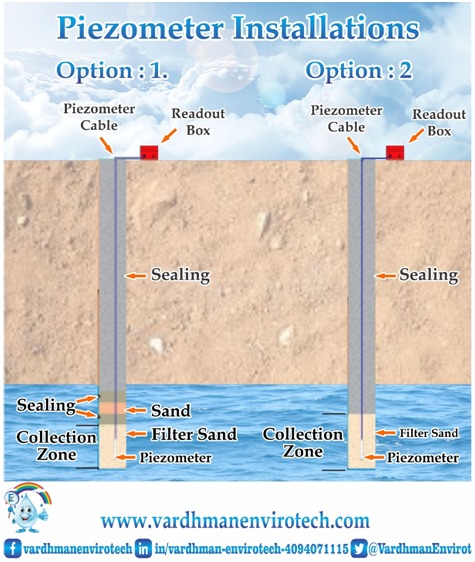
Types Of Piezometer :
There are three primary types of Piezometer:
- Standpipe Piezometer
- Pneumatic Piezometer
- Vibrating Wire Piezometer
Standpipe & Pneumatic Piezometer are simple, robust, and inexpensive, but require hands –on measurements.
Vibrating Wire Piezometeris more complicated but accurate, operator independent, and amenable to remote monitoring.
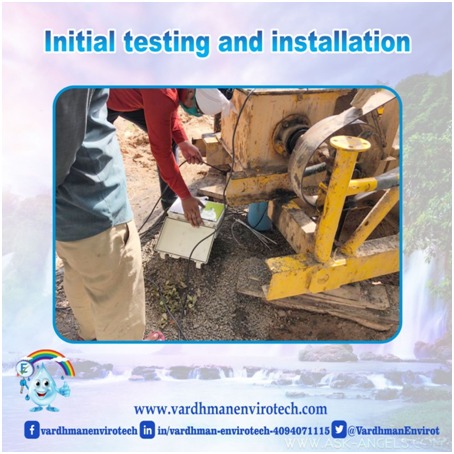
Standpipe Piezometer is the most basic type ofPiezometer.It consists of filter tip joined to a riser pipe that extends to the surface.Water flows through the filter tip into the riser pipe. Readings are obtained with a water level indicator.
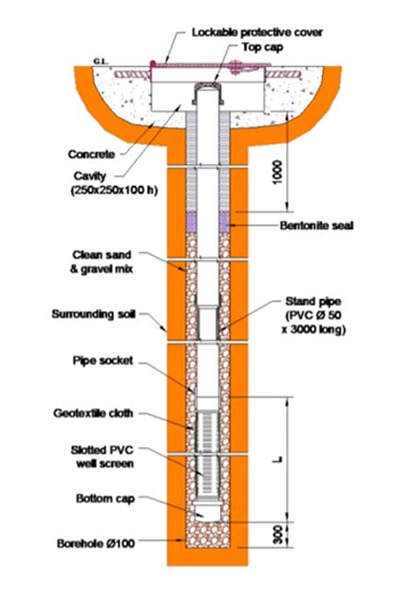
Pneumatic Piezometer operates by gas pressure. It can be installed in a borehole or suspended in a large diameter standpipe. Readings are obtained with a pneumatic indicator.
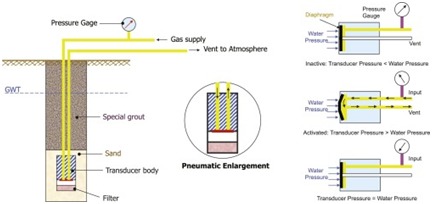
Vibrating Wire Piezometer is the most commonly deployed type of Piezometer. Suitable for most applications,it can be installed in a borehole or suspended in a standpipe. Reading are obtaind with a portable readout or a data logger.
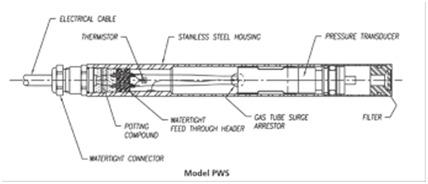
Guidelines for Installation of Piezometers and their Monitoring :
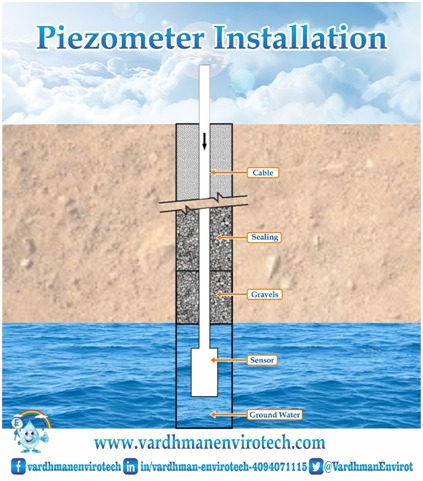
Piezometer is a bore well/ tube well used only for measuring the water level by lowering the tape/sounder or automatic water level measuring equipment.
It is also used to take water sample for water quality testing whenever needed. General guidelines for installation of piezometers are as follows for compliance of NOC
The piezometer is to be installed/constructed at the minimum of 50 m distance from the pumping well through which groundwater is being withdrawn.
The diameter of the piezometer should be about 4” to 6”.
The depth of the piezometer should be same as in case of the pumping well from which groundwater is being abstracted.
If, more than one piezometers are installed the second piezometer should monitor the shallow groundwater regime. It will facilitate shallow as well as deeper groundwater aquifer monitoring.
The measuring frequency should be monthly and accuracy of measurement should be up to cm. The reported measurement should be given in meter up to two decimal.
For measurement of water level sounder or Automatic Water Level Recorder (AWLR) with telemetry system should be used for accuracy.
The measurement of water level in piezometer should be taken, only after the pumping from the surrounding tube wells has been stopped for about four to six hours.
All the details regarding coordinates, reduced level (with respect to mean level), depth, zone tapped and assembly lowered should be provided for bringing the piezometer into the National Hydrograph Monitoring System of Central Ground Water Board, and State Groundwater Monitoring System of State Groundwater Department for its validation.
The groundwater quality has to be monitored twice in a year during pre-monsoon (May/June) and post-monsoon (October/November) periods. Quality may be got analyzed from NABL approved lab or GWD Analytical Labs. Besides, one sample (1 lt capacity bottle) of ground water collected during pre-monsoon after proper packing may be sent to the concerned Regional Labs for chemical analysis.
A permanent display board should be installed at Piezometer/ Tube well site for providing the location, piezometer/ tube well number, depth and zone tapped of piezometer/tube well for standard referencing and identification.
Any other site specific requirement regarding safety and access for measurement may be taken care off.
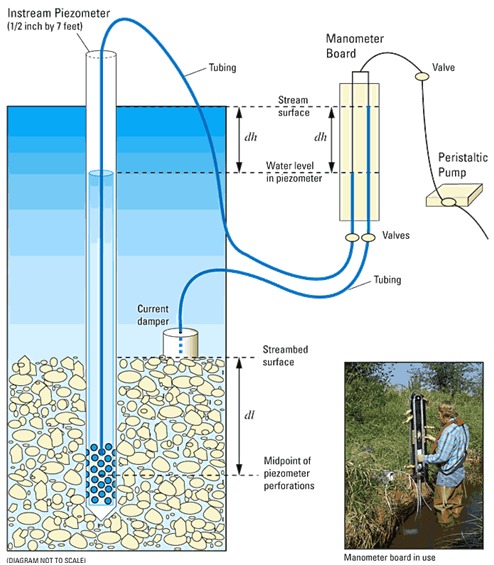
Groundwater Measurement
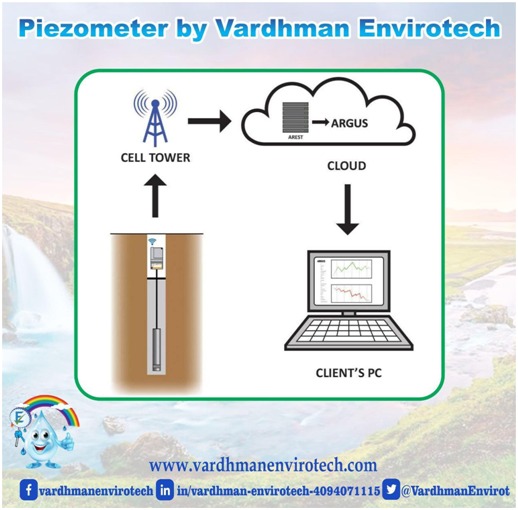
The first piezometers in geotechnical engineering were open wells or standpipes (sometimes called Casagrande piezometers) installed into an aquifer. A Casagrande piezometer will typically have a solid casing down to the depth of interest, and a slotted or screened casing within the zone where water pressure is being measured. The casing is sealed into the drillhole with clay, bentonite or concrete to prevent surface water from contaminating the groundwater supply. In an unconfined aquifer, the water level in the piezometer would not be exactly coincident with the water table, especially when the vertical component of flow velocity is significant. In a confined aquifer under artesian conditions, the water level in the piezometer indicates the pressure in the aquifer, but not necessarily the water table. Piezometer wells can be much smaller in diameter than production wells, and a 5 cm diameter standpipe is common.
Piezometers in durable casings can be buried or pushed into the ground to measure the groundwater pressure at the point of installation. The pressure gauges (transducer) can be vibrating-wire, pneumatic, or strain-gauge in operation, converting pressure into an electrical signal. These piezometers are cabled to the surface where they can be read by data loggers or portable readout units, allowing faster or more frequent reading than is possible with open standpipe piezometers
Piezometers and Groundwater Levels
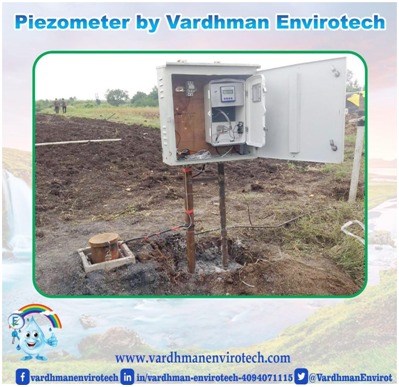
Measurements of elevations, aquifer-system compaction, and water levels are used to improve our understanding of the processes responsible for land-surface elevation changes. Elevation or elevation-change measurements are fundamental to monitoring land subsidence.
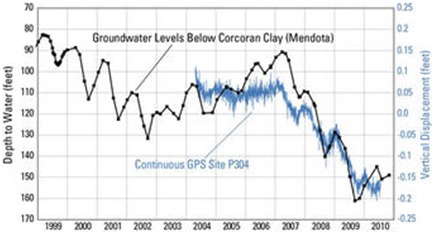
When extensometer or CGPS data are paired with groundwater-level data from a nearby well, some storage properties of the affected aquifer system can be calculated.
The CGPS data and water-level data are used for stress-strain analysis. If water levels fluctuate in the elastic range of stress, the elastic skeletal storage coefficient will be computed.
The elastic skeletal storage coefficient is a standard measure of aquifer storage that is directly related to the compressibility of the aquifer-system skeleton and largely governs the recoverable (reversible) deformation of the aquifer system.
If water levels continue to decline beyond historically low levels (the inelastic range of stress), it may be possible to compute the inelastic storage coefficient that governs the permanent compaction of the aquifer system.
If water levels are fluctuating in both ranges of stress (fluctuating seasonally and declining annually), both the elastic and inelastic storage coefficients can be computed.
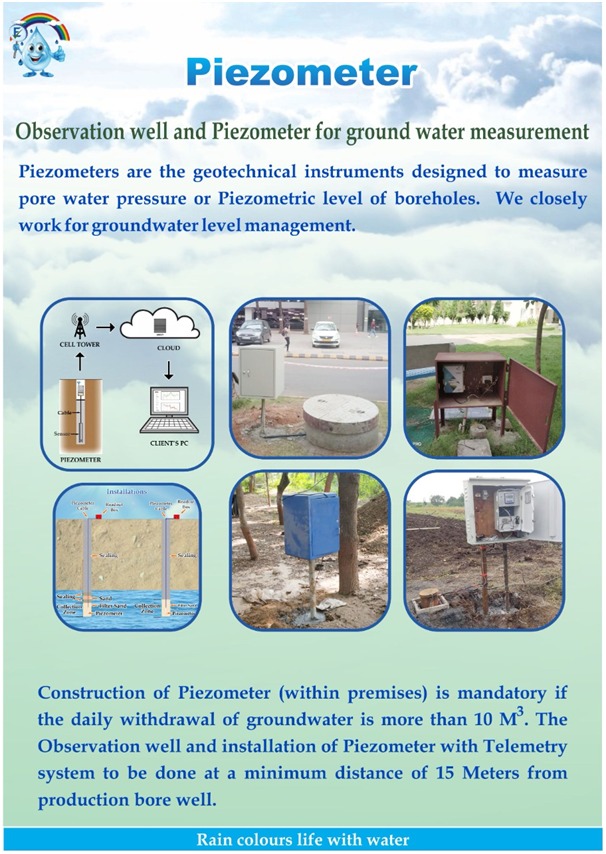
“Together lets hold the rain
and eliminate tomorrows pain”
VardhmanEnvirotech,
India’s Passionate Rainwater Company
